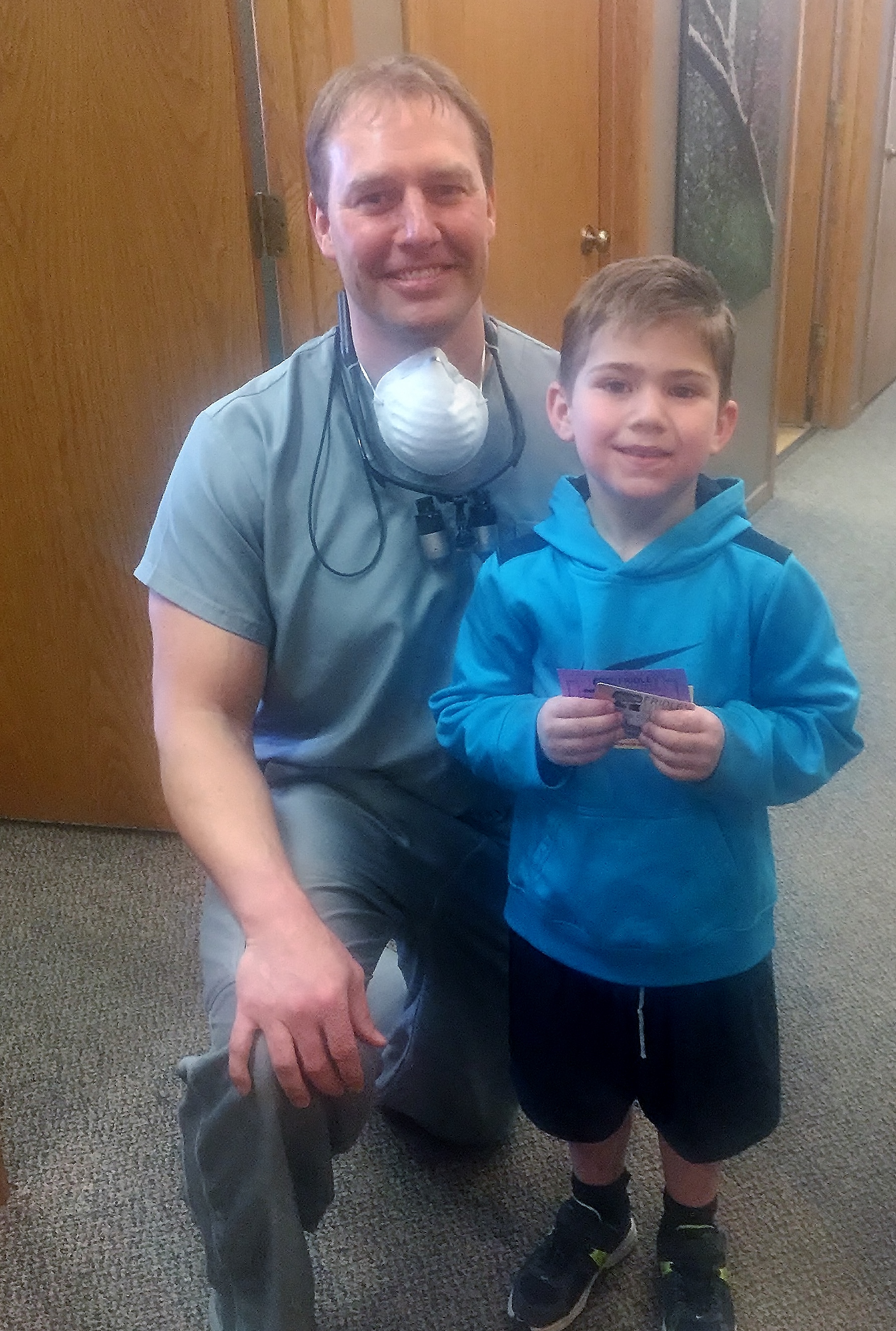Children's Dentistry
Fun for kids is a theme at Dental Associates. There is a monthly tooth fairy club, drawings for bikes and book bags and a pumpkin patch in October, as well as the annual Halloween candy buy back.
Baby teeth are important as they not only hold space for permanent teeth, but they are important to chewing, biting, speech and appearance. For this reason it is important to maintain a healthy diet and daily hygiene. The first baby teeth that come into the mouth are the two bottom front teeth. You will notice this when your baby is about six to eight months old. Next to follow will be the four upper front teeth and the remainder of your baby’s teeth will appear periodically. They will usually appear in pairs along the sides of the jaw until the child is about two- or two-and-a-half years old. Between two and three years old, your child should have all 20 teeth. Between the ages of five and six, the first permanent teeth will begin to erupt. Some of the permanent teeth replace baby teeth and some don't. Don't worry if some teeth are a few months early or late because all children are different.

Your child’s first visit to the dentist should occur by the child’s third birthday. The first dental visit is usually short and involves very little treatment. We may ask the parent to sit in the dental chair and hold their child during the examination. We will gently examine your child’s teeth and gums. If possible, x-rays may be taken to reveal decay and check on the progress of your child’s permanent teeth under the gums. We may clean your child’s teeth and apply topical fluoride to help protect the teeth against decay. The child will receive a toothbrush, some dental floss, a pencil and some stickers after their treatment. We will also review with you how to clean and care for your child’s teeth. The first visit to the dentist should create a fun memory and help the child have a positive attitude about going to the dentist.
Some first visit tips:
- Take your child for a “preview” tour of the office.
- Read books with them about going to the dentist.
- Review with them what the dentist will be doing at the time of the first visit.
- Speak positively about your own dental experiences.
